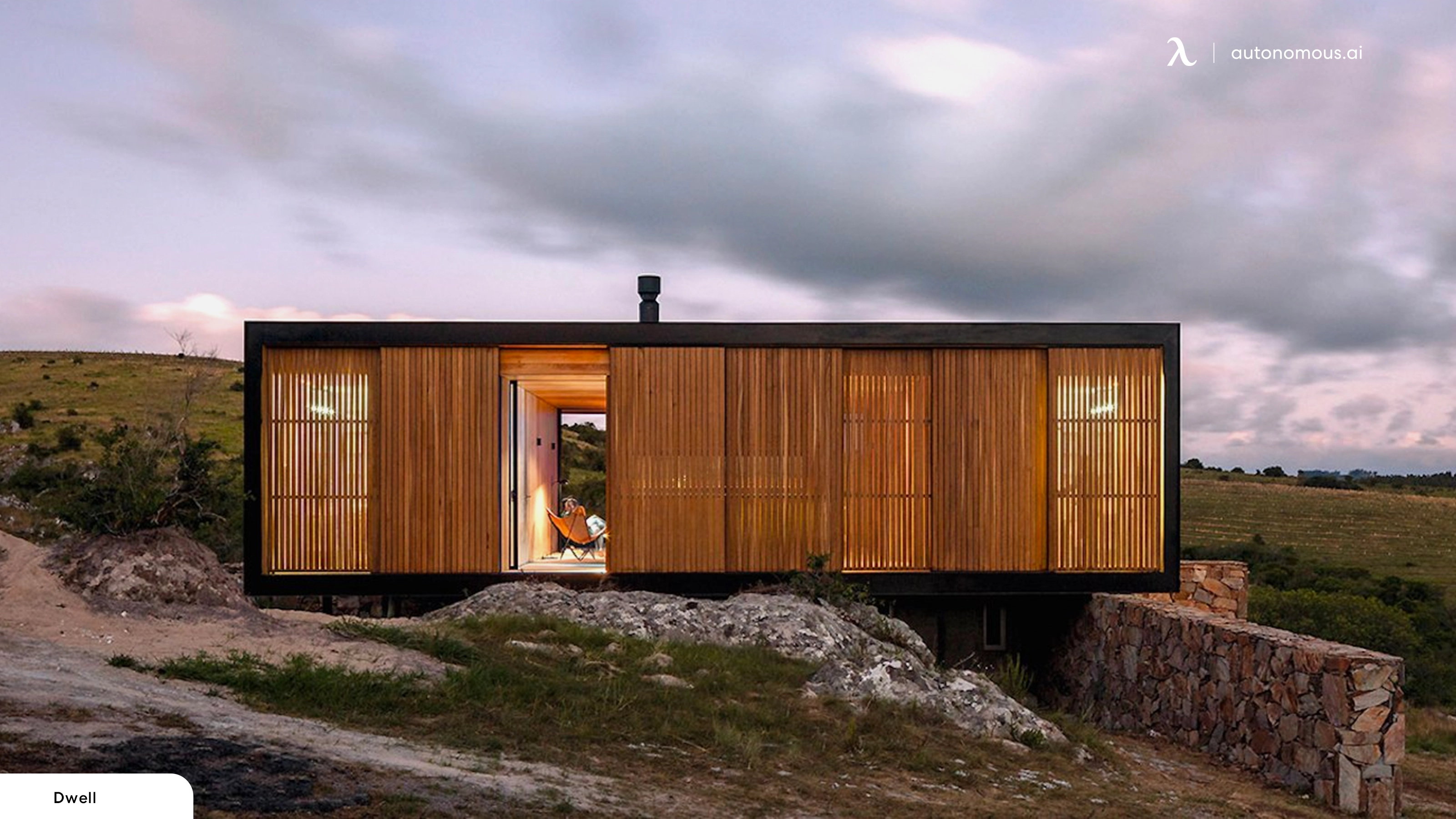Off Grid Living Ideas A Practical Guide
Off grid living ideas are gaining traction as more people seek self-sufficiency and a simpler life. This guide delves into the practical aspects of creating a sustainable off-grid existence, covering everything from renewable energy sources and water management to food production and waste disposal. We’ll explore the challenges and rewards of this lifestyle, offering insights and solutions to help you navigate the transition.
From harnessing solar power and building efficient shelters to cultivating your own food and managing waste responsibly, we provide detailed information and practical advice to empower you to build a thriving off-grid community. This comprehensive resource will equip you with the knowledge and strategies to embark on this fulfilling journey.
Power Generation for Off-Grid Living
Embracing off-grid living necessitates a reliable and sustainable power generation strategy. This involves careful consideration of various renewable energy sources, system design, and installation processes. The choice of power generation method depends heavily on geographical location, budget, and energy needs.
Renewable Energy Sources for Off-Grid Homes
Several renewable energy sources are well-suited for off-grid homes. Solar, wind, and hydro power are the most commonly employed, each with its own advantages and disadvantages. A comprehensive understanding of these factors is crucial for informed decision-making.
| Energy Source | Pros | Cons | Suitability |
|---|---|---|---|
| Solar Power | Abundant resource in many areas, relatively low maintenance, modular systems allow for scalability. | Intermittent power generation (dependent on sunlight), initial investment can be high, requires significant space for panels. | Ideal for sunny climates with ample roof or land space. |
| Wind Power | Consistent power generation in windy areas, relatively low maintenance, can be scaled to meet needs. | Requires consistent strong winds, can be noisy, visual impact on landscape, potential for bird mortality. | Suitable for locations with consistent, high-velocity winds. |
| Hydro Power | Reliable and consistent power generation, low maintenance once installed, environmentally friendly (compared to fossil fuels). | Requires access to a consistent water source with sufficient flow, high initial investment, potential environmental impacts on aquatic life. | Feasible in areas with rivers or streams with sufficient water flow and suitable topography. |
Designing a Solar Power System for an Off-Grid Cabin
Designing a solar power system involves calculating energy needs, selecting appropriate components, and sizing the battery bank. For instance, a cabin requiring 5 kWh daily with 5 hours of peak sunlight would need approximately 1 kW of solar panels (5 kWh / 5 hours = 1 kW). Battery capacity should account for several days of cloudy weather. A common rule of thumb is to have 2-3 days of battery backup.
For our example, with 2 days of backup, a 10 kWh battery bank would be required (5 kWh/day2 days = 10 kWh). This calculation needs further refinement based on specific energy consumption profiles and local weather conditions. Professional consultation is highly recommended.
Check what professionals state about off grid living cost and its benefits for the industry.
Installing a Small-Scale Wind Turbine
Installing a small-scale wind turbine requires careful site selection, focusing on areas with consistent, high winds, away from obstructions. The turbine should be securely mounted on a sturdy mast, ensuring proper grounding. Wiring needs to be carefully routed and connected to a charge controller and battery bank. Local building codes and regulations must be followed. A professional installer is recommended, particularly for larger turbines.
This process typically involves several steps, including site assessment, foundation construction, turbine assembly, wiring, and testing.
Micro-Hydro Power Feasibility and Challenges, Off grid living ideas
Micro-hydro power generation’s feasibility hinges on consistent water flow and sufficient head (height difference between water source and turbine). Geographical locations with rivers or streams exhibiting these characteristics are suitable candidates. Challenges include environmental impact assessments, permitting processes, and the high initial investment cost. For example, a mountainous region with a consistent stream could be ideal, whereas a flat, arid area would be unsuitable.
The environmental impact, particularly on aquatic life, must be carefully considered and mitigated. Detailed site surveys and engineering assessments are critical to ensure the project’s success and sustainability.
Sustainable Food Production for Off-Grid Living
Embracing self-sufficiency in an off-grid lifestyle necessitates a robust and sustainable food production system. This involves careful planning, resource management, and a deep understanding of natural cycles. Success hinges on selecting appropriate crops, managing soil health, and potentially incorporating livestock. Efficient food preservation techniques are also crucial for year-round sustenance.
Crop Selection and Soil Management for a Productive Off-Grid Garden
Establishing a thriving off-grid garden requires a strategic approach to crop selection and soil management. Choosing hardy, high-yield varieties adapted to the local climate is paramount. For example, drought-resistant crops like beans and squash are excellent choices for arid regions, while leafy greens thrive in more temperate climates. Soil health is equally critical. Regular soil testing can identify nutrient deficiencies, allowing for targeted amendment with compost or other organic matter.
Implementing techniques like crop rotation and cover cropping further enhances soil fertility and suppresses pests. No-till gardening methods minimize soil disturbance, preserving soil structure and beneficial microorganisms.
Composting and Vermicomposting Methods for Nutrient-Rich Soil
Composting and vermicomposting are essential for creating nutrient-rich soil in an off-grid setting. Traditional composting involves layering brown (carbon-rich) and green (nitrogen-rich) materials, such as leaves, grass clippings, and kitchen scraps, in a designated area. Regular turning ensures proper aeration and decomposition. Vermicomposting, on the other hand, utilizes worms to accelerate the decomposition process. Worms consume organic waste, producing nutrient-rich castings that are excellent soil amendments.
A simple vermicomposting system can be constructed using a plastic bin with drainage holes and layers of bedding material, such as shredded newspaper or coconut coir. Both methods significantly reduce waste and provide a valuable resource for garden fertilization.
Benefits and Challenges of Raising Livestock in an Off-Grid Environment
Raising livestock, such as chickens or goats, can significantly enhance food security in an off-grid environment. Chickens provide eggs and meat, while goats offer milk and meat. However, this endeavor presents certain challenges. Adequate fencing and predator protection are crucial. Disease prevention and management require vigilance, and access to veterinary care might be limited.
Sufficient pasture or supplemental feed is necessary, especially during harsh weather conditions. Proper waste management is also essential to maintain hygiene and prevent environmental contamination. For example, a small flock of chickens can provide a consistent supply of eggs and meat, while a few goats can supplement the diet with milk and cheese, but require careful management of grazing and parasite control.
Food Preservation Methods for Off-Grid Living
Effective food preservation is critical for extending the shelf life of harvested produce and ensuring year-round food security in an off-grid setting. Several methods are well-suited to this lifestyle:
- Canning: A time-tested method for preserving fruits, vegetables, and meats by heat sterilization in sealed jars.
- Drying: Dehydrating fruits, vegetables, and herbs removes moisture, inhibiting microbial growth and extending shelf life. Sun drying is a simple, low-tech approach, while electric dehydrators offer more control and speed.
- Fermenting: Lactic acid fermentation preserves foods like sauerkraut, kimchi, and pickles through the production of lactic acid by beneficial bacteria. This process not only extends shelf life but also enhances flavor and nutritional value.
- Freezing: If access to reliable refrigeration or freezing is available, freezing extends the shelf life of many foods.
- Root Cellaring: Storing root vegetables and other produce in a cool, dark, and humid environment can extend their shelf life for several months.
Waste Management in Off-Grid Communities: Off Grid Living Ideas
Successfully navigating the challenges of off-grid living requires a comprehensive approach to waste management. Unlike urban areas with established infrastructure, off-grid communities must rely on sustainable and self-sufficient methods to handle waste responsibly, minimizing environmental impact and promoting public health. Effective waste management is crucial for maintaining a healthy and harmonious living environment in these unique settings.
Composting Organic Waste and Greywater Management
Composting organic waste, such as food scraps and yard debris, is a cornerstone of effective off-grid waste management. A well-maintained compost system significantly reduces landfill waste and produces nutrient-rich soil amendment for gardening. Methods range from simple heap composting, where materials are layered in a pile, to more sophisticated systems using bins or tumblers to accelerate decomposition. Greywater, wastewater from sinks, showers, and laundry, can also be recycled through constructed wetlands or biofiltration systems.
These systems use natural processes to filter the water, making it suitable for irrigation, reducing water consumption, and minimizing the environmental impact of wastewater. Effective greywater management requires careful planning and consideration of local regulations and potential health risks.
Building a Composting Toilet
A composting toilet offers a sustainable and environmentally friendly alternative to traditional flush toilets, particularly valuable in off-grid situations where water is scarce. A simple design might involve a two-bin system: one bin for active composting and another for curing. The active bin receives human waste and a carbon-rich material like sawdust or wood shavings. The mixture is regularly turned to aerate and accelerate decomposition.
After several months, the composted material in the curing bin can be used as a soil amendment, although care must be taken to ensure pathogens are neutralized through proper composting temperatures and time. Construction materials are generally readily available and inexpensive, ranging from wood to repurposed containers. Proper ventilation is crucial to prevent odor build-up. While initial setup requires some effort, the long-term benefits of reduced water consumption and waste production are significant.
Reducing, Reusing, and Recycling Waste
The three Rs—reduce, reuse, recycle—are fundamental principles for minimizing waste in any setting, but they are especially critical off-grid. Reducing consumption at the source is the most effective strategy. This involves careful planning of purchases, minimizing packaging, and opting for durable, repairable goods. Reusing items in creative ways extends their lifespan and reduces the need for new products.
Repurposing glass jars for storage or old clothes as rags are simple examples. Recycling, while more challenging off-grid, can still be implemented through creative solutions. For example, aluminum cans can be compacted and stored for later sale or exchange, while glass can be crushed for use as aggregate in construction projects.
Managing Hazardous Waste in Off-Grid Environments
Hazardous waste, such as batteries, paints, and pesticides, presents unique challenges in off-grid settings. Proper disposal is crucial to protect human health and the environment. Minimizing the use of hazardous materials is the primary strategy. This includes choosing safer alternatives, such as natural pest control methods. When hazardous waste is unavoidable, it should be stored securely and transported to appropriate recycling or disposal facilities when possible.
In some cases, local regulations may permit on-site disposal methods, but these should be carefully considered and implemented only after thorough research and adherence to safety guidelines. Proper labeling and storage are paramount to prevent accidental exposure or environmental contamination. It is crucial to consult with local environmental agencies for guidance on safe and legal hazardous waste management practices.
Embracing off-grid living represents a significant shift towards self-reliance and environmental consciousness. While challenges exist, the rewards—a deeper connection with nature, greater independence, and a reduced environmental footprint—are substantial. This guide provides a solid foundation for those considering this lifestyle, highlighting the essential elements for a successful and sustainable off-grid existence. By carefully planning and implementing the strategies Artikeld, you can create a fulfilling and self-sufficient life beyond the grid.






